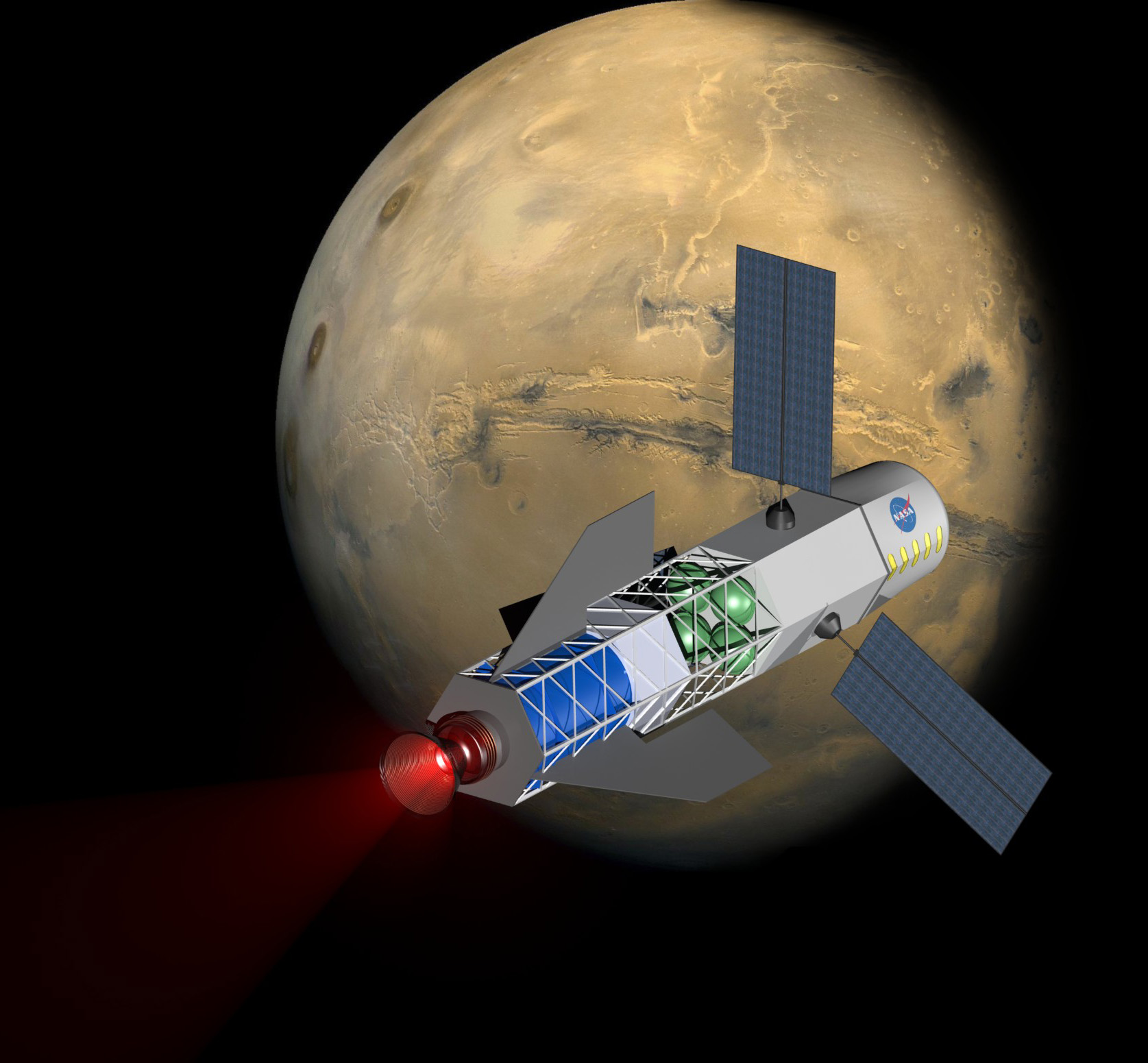
Rockets that harness the power of nuclear fusion may provide the next big leap in humanity's quest to explore the final frontier, NASA's science chief says.
Nuclear fusion rockets could slash travel times through deep space dramatically, potentially opening up vast swathes of the solar system to human exploration, said John Grunsfeld, associate administrator for NASA's Science Mission Directorate.
"It's transformative," Grunsfeld said last month after his presentation at Maker Faire Bay Area in San Mateo, Calif., a two-day celebration of DIY science, technology and engineering. "You could get to Saturn in a couple of months. How fantastic would that be?" [Superfast Propulsion Concepts (Images)]
For a little perspective: NASA's robotic Cassini spacecraft blasted off in October 1997 and didn't enter Saturn orbit until July 2004.
Speeding things up
Traditional chemical propulsion systems can get humans to destinations in deep space, but with a lot of travel time. For example, a roundtrip manned mission to the vicinity of Mars, which NASA aims to execute by the mid-2030s, would require about 500 days of spaceflight.
Speeding up the trip to Mars, or anywhere else, is desirable for a number of reasons — to minimize the radiation dose astronauts receive during the journey, for example, and to save money on consumables such as food and water.
Get the Space.com Newsletter
Breaking space news, the latest updates on rocket launches, skywatching events and more!
So NASA and researchers around the world have been investigating advanced propulsion technologies, including space-bending "warp drives," enormous solar sails and matter-antimatter engines. Nuclear fusion is perhaps the most promising of these possibilities, at least in the relatively near term, proponents say.
Fusion rockets would harness the energy released when the nuclei of two or more atoms combine. Our sun and other stars are fusion-powered, converting this energy to light; the same principle also gives hydrogen bombs their immense destructive power.
NASA has funded several early-stage fusion ideas recently via a program called NIAC (NASA Institute for Advanced Concepts). One of these groups, led by scientists at the University of Washington, recently calculated that a fusion rocket could make it possible to get astronauts to Mars in as little as 30 days.
Hurdles to overcome
Fusion rockets likely won't be powering a spacecraft anytime soon, however. Researchers still haven't developed a fusion reactor here on Earth that generates more energy than it takes in, after all, despite billions of dollars devoted to the effort over several decades.
But studying how to make fusion work for spacecraft engines could help chip away at the problem, Grunsfeld said, potentially bringing to reality a technology famous for always being "30 years away."
"That could accelerate the research for fusion reactors here on Earth," he said.
Follow Mike Wall on Twitter @michaeldwall and Google+. Follow us @Spacedotcom, Facebook or Google+. Originally published on SPACE.com.
Join our Space Forums to keep talking space on the latest missions, night sky and more! And if you have a news tip, correction or comment, let us know at: community@space.com.

Michael Wall is a Senior Space Writer with Space.com and joined the team in 2010. He primarily covers exoplanets, spaceflight and military space, but has been known to dabble in the space art beat. His book about the search for alien life, "Out There," was published on Nov. 13, 2018. Before becoming a science writer, Michael worked as a herpetologist and wildlife biologist. He has a Ph.D. in evolutionary biology from the University of Sydney, Australia, a bachelor's degree from the University of Arizona, and a graduate certificate in science writing from the University of California, Santa Cruz. To find out what his latest project is, you can follow Michael on Twitter.











